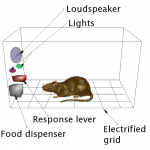Changing Player Behavior
previous article | next article One thing I need to do a lot as a game designer is come up with ways to get players to do what I want them…
Mike’s August 2015 Patreon Q&A
Watch Mike get flustered setting up new gear. He then thinks his fancy new equipment is recording high quality audio, but the awful camera mic was recording awful audio instead.…
A Morality Tale
This week I'm going to tell the story of how I learned one of the most important things I ever learned about game design: As a designer, it is not my job…
Enemy Attacks and Telegraphing
Intro Like most things when it comes to video game design, I think of enemies in terms of: The Questions the enemy is asking players The Tools I need to…
Trinity
Intro This is one in a series of blog posts/articles I’m writing to describe my game design methodology. In the first article, I named the system “Trinity” – but I…
Paths
Intro This is the latest in a series of articles I’m writing to describe the way I approach game design. The last installation was on “Ramps” – essentially a tool…
Stagecraft in Player VS Player Games
Hey everyone, I’ve had a really rough week and don’t feel up to writing the article on Paths I was going to write. Instead, I’m going to do a short…
Ramps, Part 2
Intro This is one in a series of articles I’m writing to describe the way I approach game design. In this article, I’m going to show you a trick I…
July Q&A Session Video (2015)
Hi Everyone! We finished our second monthly Q&A for the $5+ tier, and the video is now up on Youtube for anyone who missed it live. Thanks again to everyone…
Intensity Ramps
Intro: This is one part in a series of articles that will attempt to explain how I think when I design. The purpose of these articles is not as much…





